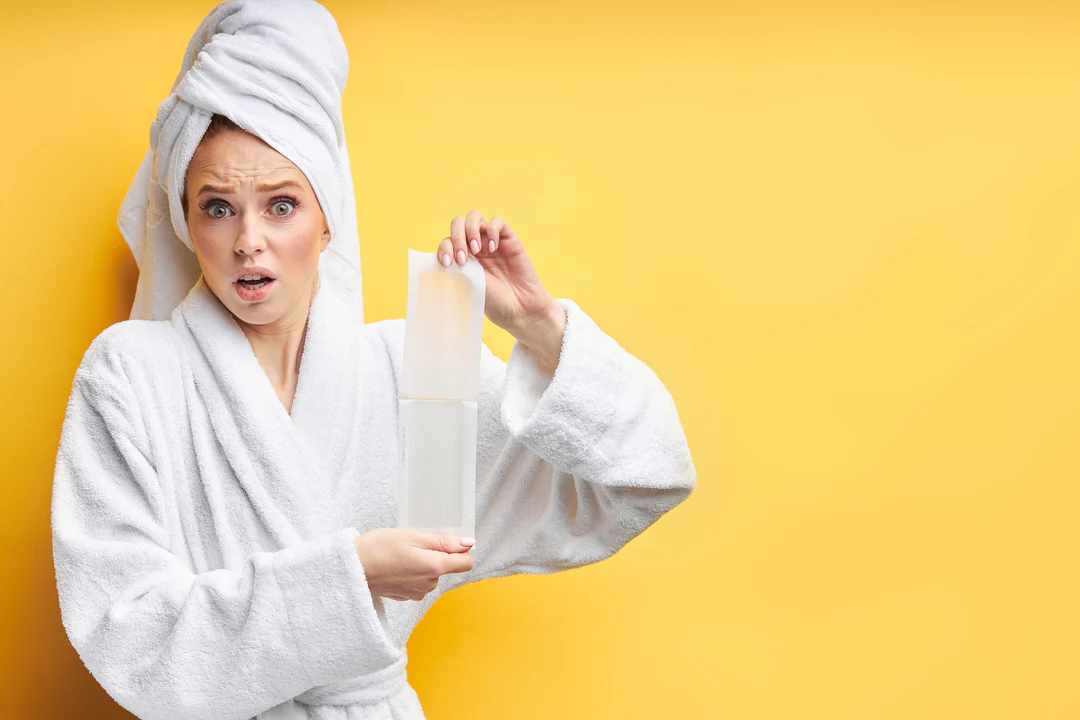
Do you need to wash your face after applying a mask?
The main purpose of a mask is to moisturize the skin. Although we recommend removing the mask after 20 minutes of use, this does not mean that you need to wash your skin because the ingredients can continue to work as the serum is absorbed into the skin.
Just like when you apply a moisturizer on your skin, you don’t wash it off immediately afterwards. The ingredients have a long-lasting effect and need time to be fully absorbed into the skin and exert their full benefits. On the other hand, you can still apply a night cream at night.
This is a frequently discussed topic and the main reason behind it is that traditional masks containing ingredients such as mud need to be washed thoroughly after use. However, the situation looks completely different with cloth masks, i.e. you can absolutely leave it on your skin to reap all the benefits.
Just like with face masks, you don’t need to wash off eye masks because they contain a lot of serum that can act like a moisturizer on your skin.
Nevertheless, we recommend that you read the individual package inserts for best results because all products are different and contain different ingredients.
What should you consider before using a mask?
Exfoliation is required before applying a mask to remove pollutants and excess oil from the surface layer of the skin and open up the pores. To understand what this means, you need to look at the three layers of skin…
Epidermis – This is the outer layer of the skin that needs to be cleansed by exfoliation. It creates our complexion.
Dermis – Cleansed by the mask as it contains hair follicles, sweat glands as well as connective tissue.
Subcutaneous tissue – It is mainly composed of fat and connective tissue and is the deeper layer of the subcutaneous tissue.
With this in mind, we have to make sure that the mask is able to remove oil and dirt from the epidermis and open up the pores. If you don’t remove all the dead skin cells on the surface, the mask simply can’t penetrate and work its magic. So if you really want to reap the benefits of the mask, you need to take preparation seriously.
So what exfoliation technique should I use?
There are a number of exfoliation techniques you can use, such as: Chemical peels, for example, mainly use AHAs or BHAs. Alpha hydroxy acids (AHAs), which are obtained from fruits, nuts, and sugars (such as citric acid, mandelic acid, or glycolic acid). Beta hydroxy acids are very good at penetrating the oil buildup on the skin and removing dead skin cells from the hair follicles. Salicylic acid is an example.
You can also try mechanical exfoliation with a tool. If you decide to use it, choose carefully because you don’t want something that’s too rough and can cause skin irritation, such as: B. Crushed fruit seeds.
You’ll find that the microspheres that were once commonly used have been banned in the UK and most European countries. The reason for this is that they were incredibly damaging to the environment when they filled the oceans. This is a huge advantage and a long-standing struggle.
Ultimately, whether you use a sharp grit machine or a deep pore machine, you should definitely use it in your beauty routine.
What to do next?
There is one last step before applying the mask. You need to warm your face to open up the pores. You can do this by splashing some warm water on it, or you can consider steaming it.
The most common way to do a steam facial is to boil some water, pour the boiling water into a bowl, place your head over the bowl, and wrap a towel over your head. This creates a kind of tent that keeps the steam inside and opens up the pores perfectly. I recommend closing your eyes, otherwise it will be very uncomfortable. I also recommend taking deep breaths.
Make sure there is some distance between your face and the water, and be careful of water splashes.
Don’t miss out on more skincare tips and expert advice on our YouTube channel! Click the “Subscribe” button to visit our green couch. You won’t regret it!


